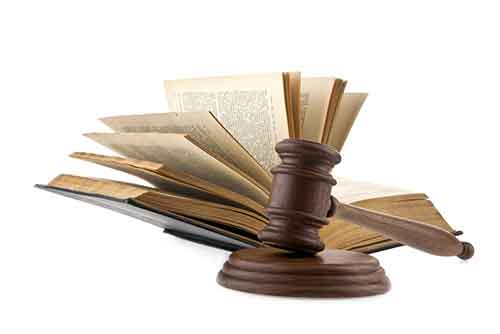Are Lawyers Liable in Malpractice Only to their Clients?
Joseph, scheduled to have open heart surgery in one week, contacts an attorney to set up two trusts that would name his daughter, mother, and several brothers and sisters as intended beneficiaries of certain assets. However, before the attorney is able to prepare the trust documents for execution, Joseph suffers a massive heart attack. Joseph’s sister phones the attorney and asks him if he could bring the trust documents to the hospital so Joseph can execute them. Although the attorney brings the trust documents to the hospital, he is denied access to Joseph due to Joseph’s deteriorating condition. Shortly thereafter Joseph passes away and the intended beneficiaries file a legal malpractice suit against the attorney alleging negligent delay in the execution of the trust documents.

A prior Connecticut Supreme Court decision Stowe v. Smith, 184 Conn. 194 (1981) held that a lawyer could be liable to intended beneficiaries for negligence in the preparation of a will, but apparently only after the will is completed. We are then left with beneficiaries able to sue lawyers for their negligence if the will has been signed but not if, due to the negligence of the lawyer, the document was not signed.
Consider the following as background to this apparent inconsistency. Krawczyk served to clarify the Connecticut Supreme Court’s 1997 decision in Mozzochi v. Beck, 204 Conn. 490 (1987). In Mozzochi, the defendant in a prior civil action filed a legal malpractice action against the former plaintiff’s counsel alleging violations of the Connecticut Code of Professional Responsibility. Id. The Connecticut Supreme Court upheld the lower court’s ruling that, because the plaintiff was not a foreseeable beneficiary of legal services rendered by the defendant attorneys, plaintiff could not maintain his legal malpractice action. Id. at 500. In its decision, the Connecticut Supreme Court acknowledged Stowe provided situations where a third party as a beneficiary could maintain a legal malpractice action but that here there was no such relationship or obligation to the adversary. Id. Prior to Krawczyk the issue appeared to be simply whether one was a foreseeable beneficiary. Yes there was liability if the plaintiff was intended as a beneficiary in a will, no if the plaintiff was the adversary in litigation.
Although both the Connecticut Appellate Court and the Connecticut Superior Courts have often cited Krawczyk in addressing the rights of third parties to maintain a legal malpractice action, the application of Krawczyk throughout these courts has not been consistent. For example, in Cole v. Cummings & Lockwood, 1993 WL 393887 (Conn. Super.), Judge Wagner denied the defendant’s motion to strike the plaintiff’s legal malpractice count because the plaintiff’s allegations satisfied Krawczyk’s five-prong test. Id. at *2. However, less than six months later, in Dime Savings Bank v. Fucetola, 1994 WL 67054 (Conn. Super.), Judge Fuller ruled that the plaintiff’s legal malpractice claim against the defendant was barred by the statute of limitations but, in dicta, also noted that it would have failed because Krawczyk established the general rule that an attorney is not liable to non-clients for the negligent rendering of legal services. Id. at *3. Judge Fuller never addressed Krawczyk’s five-prong test cited in Cole. One year later in Leavenworth v. Mathes, 38 Conn. App. 476 (1995), Judge Foti cited Krawczyk for the general rule stated in Dime Savings Bank but also noted that Krawczyk acknowledged that a number of jurisdictions have allowed a third party to bring a legal malpractice action if he or she was the intended or foreseeable beneficiary of the attorney’s legal services. Id. at 479. Finally, in Khorsandi v. Ricciardi, 1996 WL 548165 (Conn. Super.), Judge Blue, in granting the defendant’s motion to strike the plaintiff’s legal malpractice count, relied on Krawczyk’s five-prong test cited in Cole. Id. at *1-*2.
So where are we today? As noted in Krawczyk a number of other states have extended the liability of lawyers to non-clients. Our appellate courts have been slow to extend liability in Connecticut, but after a review of some of the Superior Court cases, the footsteps in the background can be heard as more than faint sounds in the distance. As the liability appears to be based largely on a theory of a third party beneficiary, can the lawyer protect himself from claims on behalf of non-clients, by including in a retention agreement a specific statement that the services are not intended to benefit those non-clients or that the liability is simply limited? Does rule 1.8(g) of the Rules of Professional Conduct, which limits such disclaimers of liability apply, or is it simply a limitation of the scope of representation which is specifically allowed under rule 1.2 (c)? Will our appellate courts apply something similar to the five-prong test to allow such liability? Time, the courts, and possibly future articles may shed light on whose footsteps practitioners must actually be concerned about.
Questions – call Bruce Stanger of StangerLaw LLC
860-561-0651